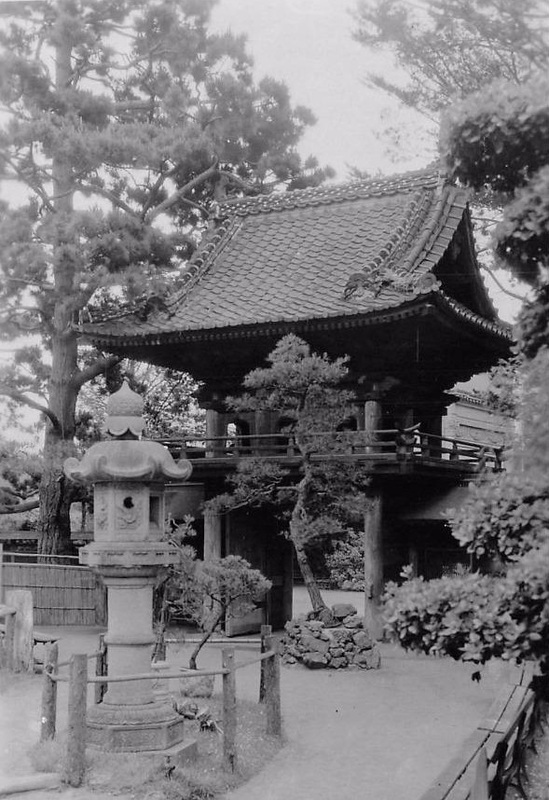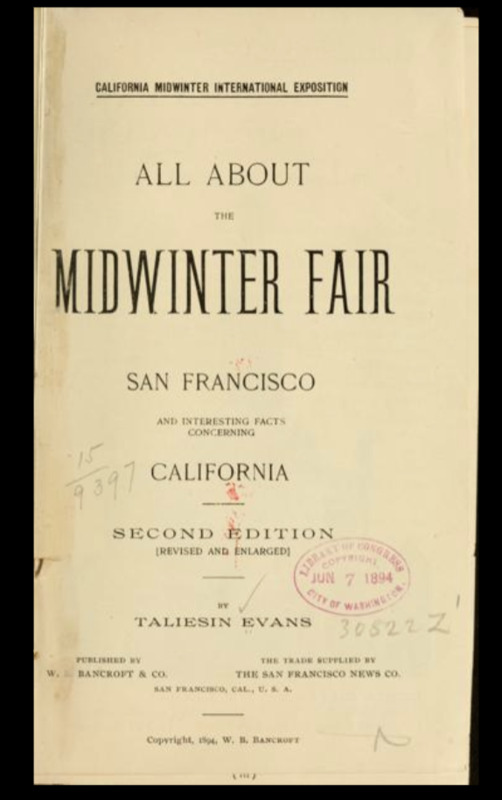The Japanese Garden Movements
19th-20th Century Japanese Gardens Interest within United States
Prior to the 1915 Japanese Tea Pavilion garden in Balboa Park, there were other Japanese gardens that sprouted up. One of the largest was created in San Francisco's Golden Gate Park, a Japanese Tea Garden constructed in 1894 as part of a planned Midwinter Exposition for the city. Originally deemed the 'Japanese Village', the exhibit was a huge hit with visitors and the city kept the garden on as a permanent site. [1] Today, San Francisco's Japanese Tea Garden is the oldest of its kind in the United States.
As was case for San Diego, San Francisco was trying to get out of an economic depression. Their Midwinter Fair planned as a solution, following the success of Chicago's Columbian Exposition in 1893. The work of Australian merchant George Turner Marsh, saw the Japanese garden becoming a highlight of SF's Midwinter Fair of 1894 [2]. The exhibits in Golden Gate Park were 'cultural', or in essence, a way for Anglos to 'experience' other cultures from around the world.
Japanese architect Takeda-Goichi designed the buildings for the San Francisco Fair and the two-acre garden was created by Izawa-Hannosuke. The exhibit also included a theater with Japanese dancers and acrobats, and a studio with artists creating live caricatures.
At this time, there were some controversial issues in regard to ethnic prejudices related to the rickshaws used as part of the exhibit's activities. Normally performed by animals in Japan, for the SF Midwinter Fair they had people pulling the rickshaws. When Japanese-Americans filed complaints, the Fair Committee thought the solution was to have "white men, who wore yellowface and were dressed in Japanese garb, do the job instead." [3]
In the years to follow, effects of World War II would see the caretakers for San Francisco's garden forced to an internment camp, removing them from the garden they nurtured and called home; similarly this was the fate for The Asakawa Family of San Diego's Japanese Tea Pavilion. [3]
*Read more about Japanese Garden movements at East Meets West in Balboa Park [4]
Sources:
[1] Amero, Richard. "A Panama-California Exposition: A History of the Exposition," Panama-California Exposition San Diego History Center. https://sandiegohistorycenter.org/archives/amero/1915expo/
[2] Metcalfe, John. "The Intriguing History Behind San Francisco's Japanese Tea Garden," The Mercury News (June 29 2022). Accessed: 4/27/2023.
[3] Allen-Price, Olivia. “The Complicated Origins of SF's Beloved Japanese Tea Garden.” KQED, June 1, 2022. https://www.kqed.org/news/11915583/the-japanese-tea-garden-a-beloved-s-f-landmark-with-a-troubling-past.
[4] Amero, Richard. "A Panama-California Exposition: A History of the Exposition," Panama-California Exposition San Diego History Center. https://sandiegohistorycenter.org/archives/amero/1915expo/



